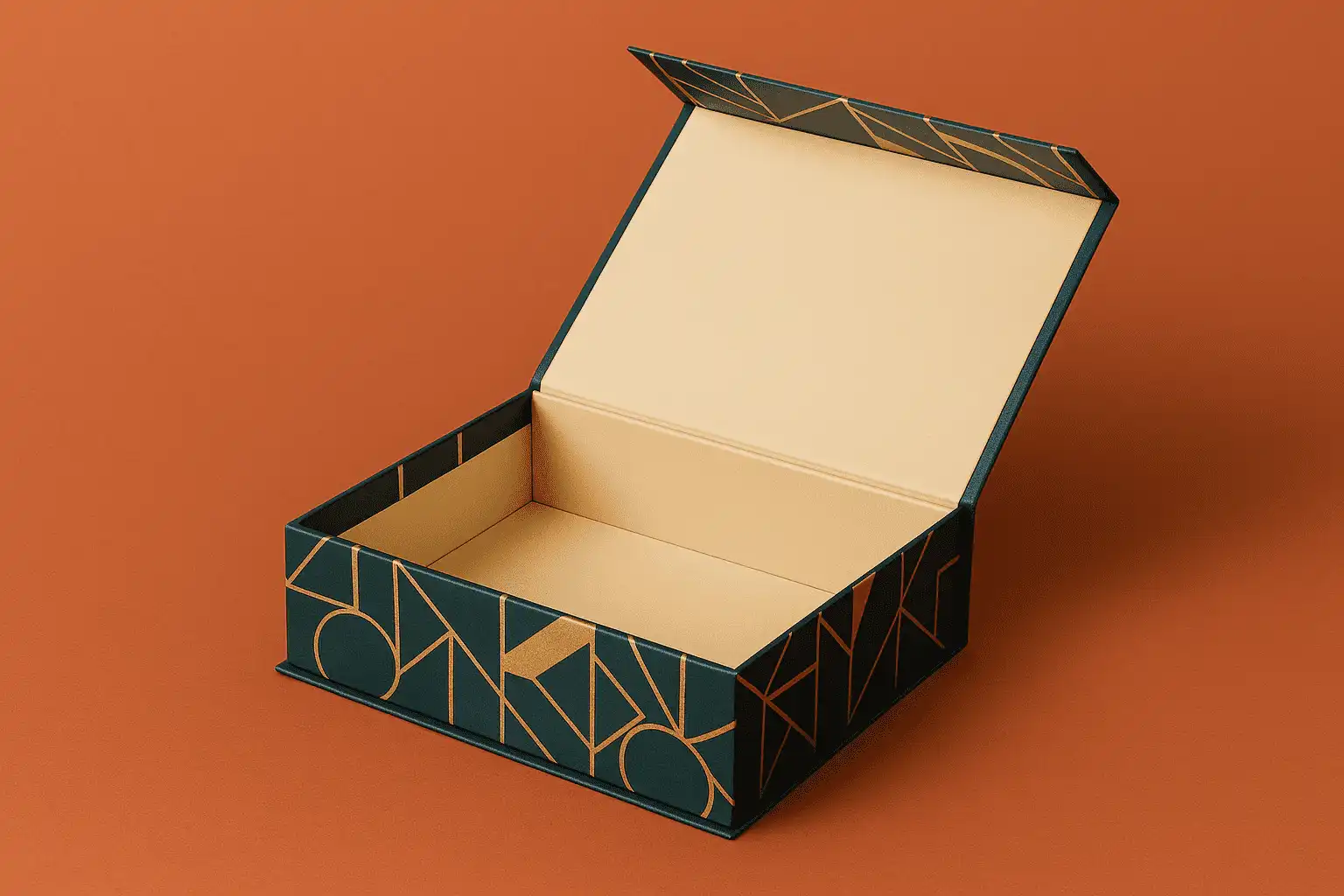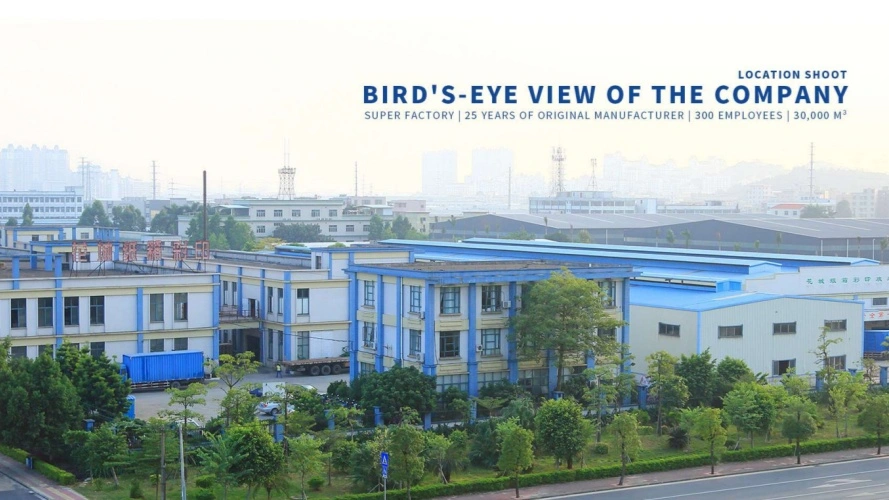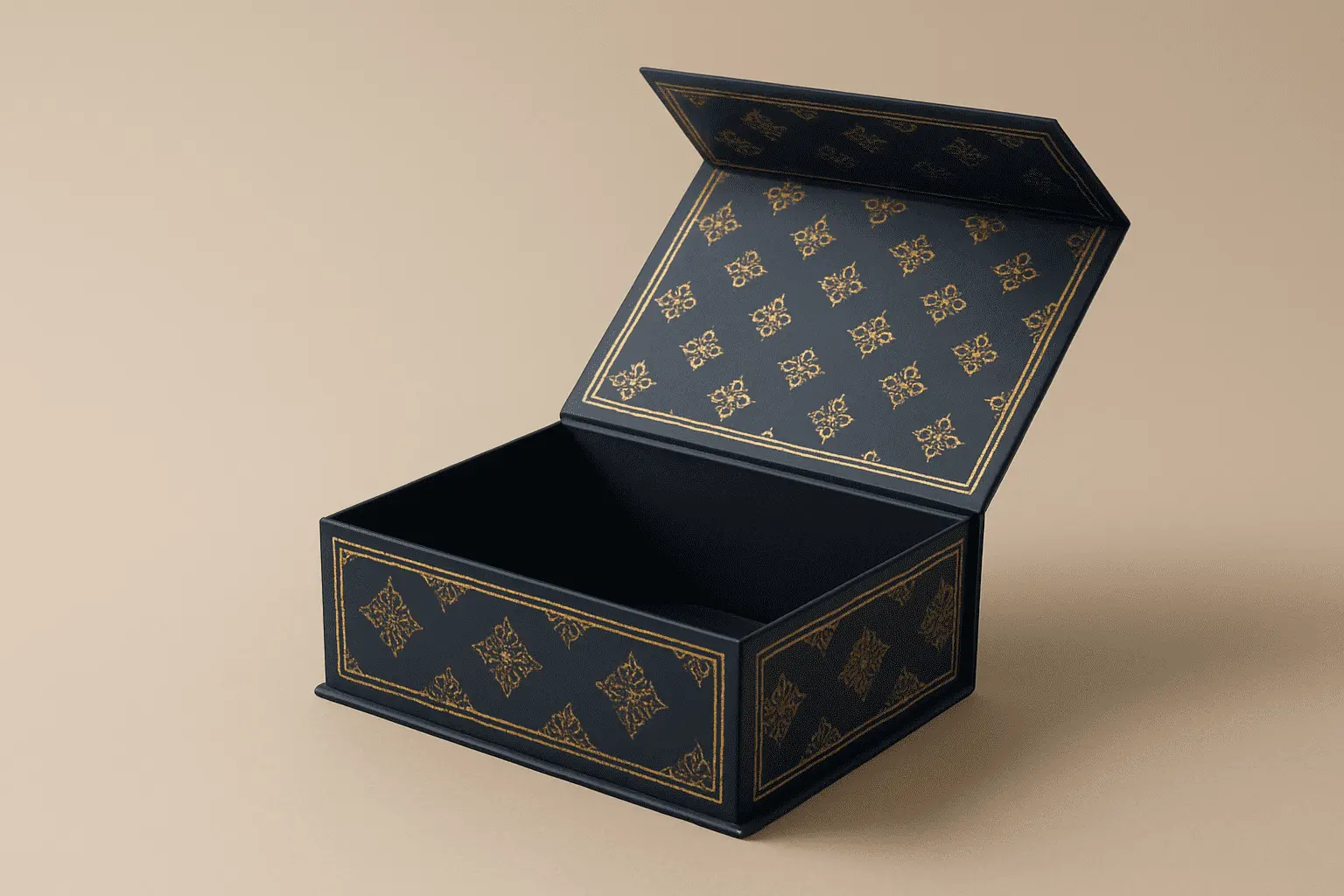The Ultimate Guide to Collapsible Rigid Box: Everything You Need to Know
Are you looking for a premium packaging solution that combines luxury appeal with practical shipping benefits? The collapsible rigid box has revolutionized the packaging industry by offering the perfect balance between elegance and efficiency. These innovative structures provide the same high-end look and feel of traditional rigid boxes while addressing critical logistics challenges related to shipping and storage. In this comprehensive guide, we'll explore everything you need to know about collapsible rigid boxes - from their unique construction and benefits to customization options and practical applications across various industries. Whether you're a brand manager seeking to elevate your product presentation or a packaging professional looking to optimize your supply chain, this guide will equip you with essential insights about this game-changing packaging solution.

Understanding Collapsible Rigid Boxes and Their Advantages
What Makes Collapsible Rigid Boxes Different from Traditional Packaging
Collapsible rigid boxes represent a significant innovation in the premium packaging sector. Unlike traditional rigid boxes that maintain their shape permanently, the collapsible rigid box features a unique construction allowing it to be flattened during shipping and storage, then easily assembled when needed. This fundamental difference stems from specialized manufacturing techniques that maintain the sturdy, luxury feel consumers expect while incorporating strategic fold lines and assembly mechanisms. The structure typically includes a rigid board base with precisely engineered creases that enable controlled collapse without compromising structural integrity. When comparing collapsible rigid boxes with standard packaging solutions, the differences become apparent in handling, shipping efficiency, and environmental impact. The collapsible rigid box provides the same high-end presentation value as traditional rigid boxes but with significantly reduced volume during transit. This hybrid approach effectively bridges the gap between premium rigid packaging and more efficient folding cartons, offering brands a solution that doesn't force them to choose between luxury appearance and practical logistics.
Cost-Efficiency and Space-Saving Benefits
The financial and spatial advantages of collapsible rigid boxes are truly transformative for brands and retailers alike. Most significantly, these innovative packaging solutions can save more than 60% of shipping and storage costs compared with standard gift boxes. This dramatic reduction results from their ability to ship flat, allowing significantly more units to fit in the same container or warehouse space. For example, where traditional rigid boxes might require ten pallets for shipping, the same quantity of collapsible rigid boxes might require only four. This space optimization translates directly to freight savings, reduced carbon footprint, and lower warehouse storage costs. Additionally, many manufacturers have developed proprietary versions of collapsible rigid boxes that offer even greater efficiencies. Independent R&D patented designs suitable for magnetic gift boxes with product heights of 50-100mm can save an additional 20%-30% in costs compared with standard collapsible rigid boxes. These compounded savings make collapsible rigid boxes an increasingly attractive option for brands seeking to balance premium presentation with fiscal responsibility, especially as shipping and logistics costs continue to rise globally.
Environmental Sustainability Factors
The environmental advantages of collapsible rigid boxes align perfectly with modern corporate sustainability initiatives. These packaging solutions significantly reduce the carbon footprint associated with transportation by optimizing space usage during shipping. With their flat configuration requiring substantially less volume than assembled boxes, more units can be transported in fewer shipments, directly reducing fuel consumption and associated emissions. Additionally, high-quality collapsible rigid boxes are typically manufactured using FSC-certified materials, ensuring the paperboard comes from responsibly managed forests that provide environmental, social, and economic benefits. This certification gives brands confidence that their packaging choices support sustainable forestry practices. The construction of collapsible rigid boxes also prioritizes recyclability, using materials that can be easily processed through standard recycling streams. Unlike packaging that combines multiple materials requiring separation, collapsible rigid boxes are predominantly made from paperboard that can be recycled as a single material. This environmental consciousness extends to production processes as well, with reputable manufacturers implementing ISO14001-2015 Environmental Management Systems to minimize waste and pollution throughout the manufacturing cycle. By choosing collapsible rigid box solutions, brands demonstrate tangible commitment to environmental responsibility without compromising on premium packaging aesthetics.
Design and Customization Options for Collapsible Rigid Boxes
Premium Finishing Techniques for Brand Enhancement
The visual and tactile appeal of collapsible rigid boxes can be dramatically elevated through sophisticated finishing techniques that transform ordinary packaging into memorable brand experiences. These premium finishes create distinctive sensory touchpoints that reinforce brand positioning and justify premium pricing. Cold and hot foil stamping techniques can be applied to collapsible rigid boxes to create metallic accents that catch the light and draw attention to logos, patterns, or text elements. This process involves pressing metallic foil onto the surface using heated dies, resulting in a reflective finish that communicates luxury and attention to detail. UV coating offers another dimension of enhancement, allowing for selective glossy areas that contrast with matte surfaces, creating visual and tactile interest. More advanced options include spot UV effects with varying thicknesses to create embossed-like textures without the cost of traditional embossing. Texture plays an equally important role in premium packaging, with options like frosted touch finishes providing a soft, velvety feel that invites consumers to engage physically with the package. These tactile elements can be combined with visual enhancements for multi-sensory impact. Traditional embossing and debossing techniques remain highly effective on collapsible rigid boxes, creating dimensional elements that add sophistication while reinforcing brand identity. When these finishing techniques are thoughtfully integrated with structural design, the collapsible rigid box transcends its functional purpose to become an extension of the product's value proposition and an ambassador for the brand's quality standards.
Structural Design Innovations and Configurations
The engineering behind collapsible rigid boxes continues to evolve, with structural innovations providing brands with increasingly versatile and functional options. The fundamental collapsible mechanism has been refined through extensive R&D to ensure smooth assembly while maintaining the premium feel expected from rigid packaging. Modern collapsible rigid box designs feature precision-engineered crease patterns that control the folding behavior, preventing unwanted buckling or warping during assembly. This technical precision allows for various structural configurations that serve different product needs. Magnetic closure systems represent one of the most popular enhancements for collapsible rigid boxes, creating an engaging "unboxing" experience with a satisfying closing action and secure product protection. These magnetic mechanisms can be seamlessly integrated into the collapsible structure without compromising its ability to ship flat. Interior fitments represent another area of innovation, with collapsible rigid boxes now accommodating various insert styles that provide product protection while enhancing presentation. These can include molded pulp trays, foam inserts, or ribbon pull systems, all designed to work with the collapsible mechanism. The structural versatility extends to shape as well, with options beyond the traditional square or rectangular formats. Hexagonal, triangular, and even circular collapsible rigid boxes are now technically feasible, though they require sophisticated engineering to maintain proper collapsing function. Manufacturers with advanced production capabilities can produce these specialized shapes using automatic visual positioning box production lines, ensuring short production periods and stable quality despite the complexity of the designs.
Industry-Specific Applications and Customization
Collapsible rigid boxes demonstrate remarkable versatility across various product categories, with customization options tailored to specific industry requirements. In the premium cosmetics sector, collapsible rigid boxes provide the luxurious presentation essential for high-end products while addressing the industry's growing sustainability concerns. These boxes can be designed with specialized inserts that perfectly cradle delicate bottles or compacts, preventing movement during shipping while creating a theatrical unveiling experience for consumers. UV coating and selective foil applications emphasize brand elements while protecting the surface from cosmetic product residue. For electronics manufacturers, collapsible rigid boxes offer excellent protection combined with premium presentation. Anti-static coatings can be applied to interior surfaces to protect sensitive components, while magnetic closures provide secure containment without requiring difficult-to-recycle plastic latches. The substantial weight-bearing capacity of collapsible rigid boxes makes them ideal for heavier electronic items. In the luxury food and beverage industry, collapsible rigid boxes create gift-worthy packaging that enhances perceived value. These can be customized with food-safe interior coatings and designed with windows that showcase the product while maintaining structural integrity. With a minimum order quantity (MOQ) of 1000 pieces and comprehensive customization services, brands across all industries can develop bespoke collapsible rigid box solutions. Expert packaging engineers collaborate with clients through the entire development process, from conceptualization through manufacturing, ensuring the final product aligns perfectly with brand requirements while taking advantage of all the functional benefits collapsible rigid boxes offer.
Implementation and Supply Chain Considerations
Production Process and Quality Control Measures
The manufacturing excellence behind premium collapsible rigid boxes involves sophisticated production processes and rigorous quality control systems that ensure consistent results. The journey begins with material selection, where high-grade paperboard undergoes testing for strength, rigidity, and folding endurance to confirm its suitability for collapsible rigid box applications. Leading manufacturers utilize paperboard with precise density specifications to achieve the perfect balance between durability and foldability. Once materials are approved, the production process leverages advanced machinery including automatic visual positioning box production lines that significantly reduce human error while accelerating throughput. These automated systems can detect minute alignment issues invisible to the human eye, ensuring precise construction essential for proper collapse and assembly functionality. Quality assurance protocols for collapsible rigid boxes include multiple inspection points, beginning with raw material certification and continuing through die-cutting accuracy verification, print quality assessment, and structural integrity testing. Each collapsible rigid box undergoes folding cycle testing to confirm it can withstand repeated collapse and assembly without degradation of structure or finish. Top manufacturers implement ISO9001-2015 Quality Management Systems to standardize these processes and create documentation trails that enable continuous improvement. Additionally, color consistency is maintained through G7 Color Management certification, ensuring brand colors remain faithful across production runs. This comprehensive approach to quality control results in collapsible rigid boxes that maintain premium presentation standards while functioning flawlessly throughout the supply chain, from manufacturer to end consumer.
Shipping, Storage, and Assembly Logistics
The logistical advantages of collapsible rigid boxes become most apparent when examining the entire supply chain from production to final assembly. These innovative packages can be shipped flat, dramatically increasing the efficiency of transportation - where one truck might carry 10,000 traditional rigid boxes, the same vehicle could transport upwards of 25,000 collapsible rigid boxes. This density improvement translates directly to reduced shipping costs, lower carbon emissions, and faster transit times. Upon arrival at warehousing facilities, the space-saving continues with collapsible rigid boxes requiring as little as 40% of the storage space needed for pre-assembled alternatives. This efficiency is particularly valuable in markets with high real estate costs or for brands with limited storage capacity. When transition to retail or fulfillment operations is required, collapsible rigid boxes demonstrate their practical versatility. Assembly requires minimal training and can be performed on-demand, allowing brands to prepare packages as needed rather than storing bulky assembled boxes. The assembly process typically takes under 30 seconds per unit, with no specialized equipment required beyond human hands. This flexibility allows for just-in-time assembly strategies that optimize workflow and adapt to changing demand patterns. With delivery times of 15-20 days for custom orders, brands can maintain responsive inventory management without excessive safety stock. The collapsible rigid box thus represents not just a premium packaging option but a logistics solution that addresses multiple supply chain challenges simultaneously, particularly for brands seeking to balance high-end presentation with operational efficiency.
Cost Analysis and ROI Considerations
Implementing collapsible rigid boxes requires thoughtful financial analysis that looks beyond unit pricing to consider total value throughout the product lifecycle. The initial production cost of collapsible rigid boxes typically exceeds that of standard folding cartons but compares favorably with traditional rigid boxes, particularly when considering the complete cost picture. The most significant economic advantage comes from logistics savings, with the 60% reduction in shipping and storage space translating to proportional cost decreases in these categories. For international brands, these savings can be substantial enough to offset the entire premium paid for higher-quality packaging. When evaluating return on investment, brands should consider both tangible and intangible benefits. The tangible ROI factors include reduced damage rates (as collapsible rigid boxes provide superior protection compared to folding cartons), lower returns processing costs, and the aforementioned logistics savings. Equally important are the intangible returns: enhanced unboxing experiences that drive social media sharing, increased perceived value that supports premium pricing strategies, and stronger brand loyalty through memorable packaging interactions. For brands taking advantage of enhanced customization options, manufacturers offer services that further maximize value, including free 3D mock-ups that reduce revision cycles and monthly design releases that keep packaging fresh and on-trend. Payment terms including T/T, Western Union, and credit card options provide financial flexibility, while stringent compensation conditions protect against quality issues. By partnering with established manufacturers offering these comprehensive services, brands can achieve an optimal balance between immediate costs and long-term value when implementing collapsible rigid box strategies in their packaging portfolio.
Conclusion
Collapsible rigid boxes represent the perfect fusion of luxury presentation and practical efficiency in today's competitive marketplace. As we've explored throughout this guide, these innovative packaging solutions deliver premium unboxing experiences while addressing critical business challenges related to shipping, storage, and sustainability. With customization options ranging from sophisticated finishes to structural variations, brands can create distinctive packaging identities without compromising on operational efficiency or environmental responsibility. With 20 years of original manufacturing experience, Fetching Printing stands ready to transform your packaging vision into reality. Our 300+ skilled employees work within our expansive 35,000 m² facility to deliver exceptional quality collapsible rigid boxes to over 1,000 loyal customers worldwide. Our team of five senior engineers, each with more than 10 years of industry experience, continuously innovates to provide cutting-edge solutions tailored to your unique needs. Ready to elevate your packaging experience? Contact our expert team today at support@fetchingprinting.com to discuss your collapsible rigid box project and discover how our comprehensive packaging solutions can enhance your brand presentation.
References
1. Johnson, M. R. (2023). Sustainable Luxury: The Rise of Collapsible Rigid Boxes in Premium Packaging. Journal of Packaging Technology and Research, 15(3), 45-62.
2. Chen, L., & Williams, S. (2022). Structural Engineering Principles in Modern Luxury Packaging Design. International Paper and Packaging Review, 28(2), 112-129.
3. Patel, H. K. (2023). Environmental Impact Assessment of Collapsible vs. Traditional Rigid Boxes. Sustainable Packaging Quarterly, 19(1), 73-89.
4. Thompson, R. (2022). The Psychology of Unboxing: How Premium Packaging Influences Consumer Perception. Journal of Consumer Behavior, 33(4), 211-228.
5. Nakamura, T., & Garcia, E. (2024). Supply Chain Optimization Through Innovative Packaging Solutions. International Journal of Logistics Management, 42(1), 18-35.
6. Zhao, Y., & Smith, P. (2023). Cost-Benefit Analysis of Premium Packaging Options for Global Brands. Corporate Sustainability Reports, 7(2), 144-163.

Based on your location and order quantity, you will have the opportunity to receive a limited time free shipping promotion!

Corporate Purpose
